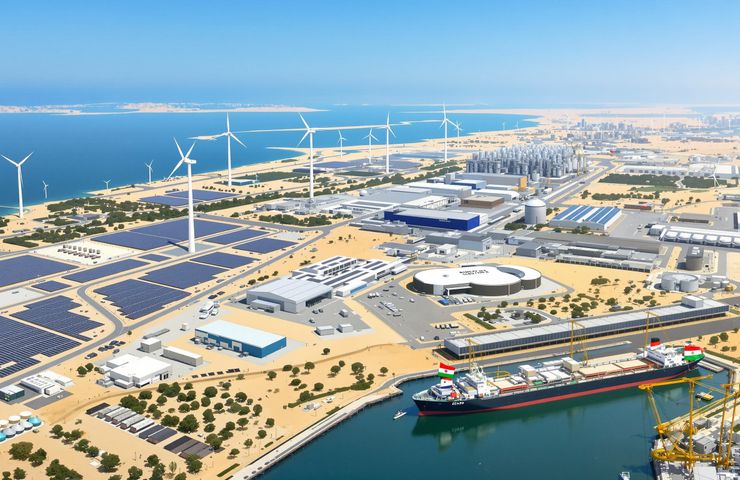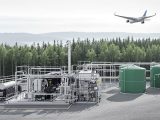
Green Hydrogen Revolution Takes Root at Egypt’s Suez Canal Economic Zone
August 21, 2025The Dawn of a Green Era in the Suez Canal
One bright August morning in 2025, the expansive ports and industrial parks of the Suez Canal Economic Zone (SCZONE) felt electric with possibility. Sandwiched between the Red Sea and the Mediterranean, this strategic hub has been moving millions of containers since 2015—but today, it’s making waves for something even more exciting: a clean energy revolution. Egypt’s sprinting to become a global leader in renewable maritime fuels, and SCZONE’s right in the thick of it.
With its vast industrial parks, deep-water berths at Sokhna and East Port Said, and a knack for attracting billions in foreign investment, the zone is leading the green charge. You can almost feel it in the air—rows of solar panels soaking up the desert sun, wind turbines quietly spinning on nearby ridges. And the cherry on top? New ammonia bunkering facilities that will dramatically cut carbon footprints for vessels navigating one of the world’s busiest sailing corridors. It’s a picture-perfect example of how ancient trade routes can adopt 21st-century green ambition, offering a real glimpse of sustainable shipping’s future.
Forging a Green Hydrogen Alliance
Back on August 20, 2025, SCZONE and the Tokyo Metropolitan Government (TMG) inked a landmark Memorandum of Understanding to supercharge green hydrogen development. The ceremony at SCZONE’s HQ felt more like a high-energy summit than a press event—key players like Waleid Gamal Eldien (chairman of SCZONE), TANAKA Shin-ichi (Director General at TMG), and Tokyo Governor Yuriko Koike all shook hands, with Egypt’s Prime Minister Mostafa Madbouly looking on.
Under this MoU, they’ll exchange technical know-how, dive into joint feasibility studies, and roll out pilot workshops on electrolyzer design and hydrogen storage. They’ve pledged to stage demo projects, share real-time data on zero-emission hydrogen production, and hash out incentives to drive the market. This isn’t just window dressing: it locks in Egypt’s ambition to lead in green hydrogen exports and taps into Tokyo’s state-of-the-art research, ensuring both partners come out ahead.
Revolutionizing Maritime Fuel with Ammonia
Building on that momentum, SCZONE also struck a deal with ITOCHU Corporation and Orascom Construction to roll out integrated ammonia bunkering facilities at Sokhna and East Port Said. Unlike traditional bunker oil, ammonia—made from green hydrogen and nitrogen—burns clean, delivering a zero-carbon punch. These pioneering platforms will store, handle, and refuel NH₃-powered ships with minimal engine tweaks.
From site planning to engineering and safety protocols, every detail’s covered. Once up and running, the aim is to service dozens of vessels each month. By establishing a dependable supply chain for renewable maritime fuels, SCZONE is set to shake up shipping standards throughout the Suez Canal corridor.
Building a Global Green Network
That was just the tip of the iceberg. At the Egypt–Japan Investment Forum in early August, SCZONE and its partners sealed another 12 agreements and letters of intent. Talks with heavyweights like Sumitomo Corporation and other Japanese giants covered everything from new industrial zones to logistics hubs and wider hydrogen applications. All this hustle shows one thing: forging a truly international green energy ecosystem stretching from North Africa and the Mediterranean right through to East Asia.
Ripples of Impact and Future Prospects
Put it all together, and the impact’s huge: local teams get a masterclass in renewable tech, high-skilled jobs pop up, and Egypt–Japan supply chains knit closer than ever. Upgrading SCZONE’s ports means shaving off tens of thousands of tonnes of CO₂ each year from maritime transport—right in step with global decarbonization goals. Exporters in Egypt score cleaner, greener logistics, while Tokyo-based companies tap into affordable hydrogen feedstocks for regional markets.
But that’s just the beginning. Down the line, we could see hydrogen-powered refineries, ammonia-to-power plants, and even green steel mills popping up. With Egypt’s sun-soaked solar farms and breezy wind corridors teaming up with Tokyo’s cutting-edge research, this partnership is the ultimate playbook for cross-border clean energy collaboration. It’s a thrilling snapshot of vision colliding with action—just watch how the Suez Canal Economic Zone steers us into a truly sustainable future.



 With over 15 years of reporting hydrogen news, we are your premier source for the latest updates and insights in hydrogen and renewable energy.
With over 15 years of reporting hydrogen news, we are your premier source for the latest updates and insights in hydrogen and renewable energy.